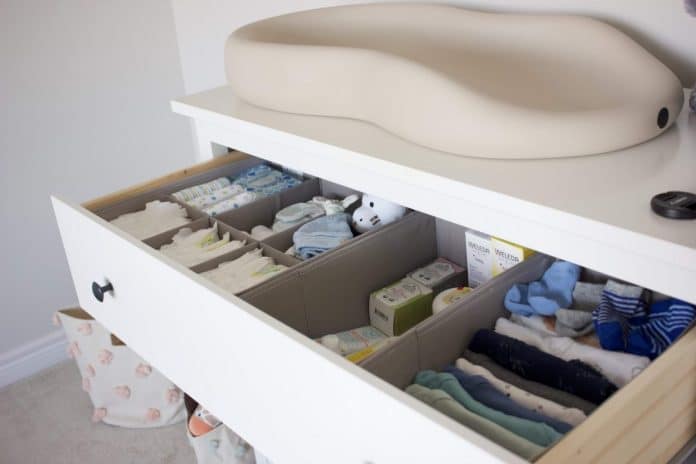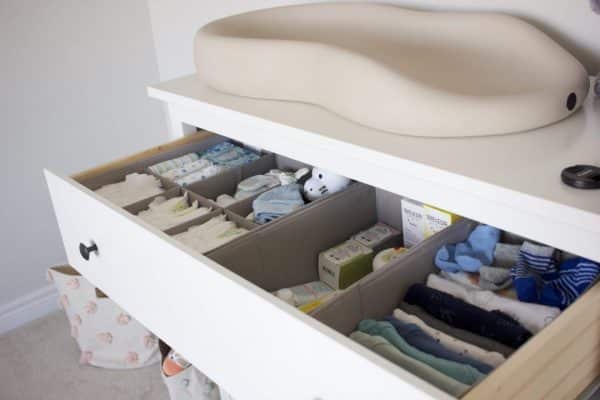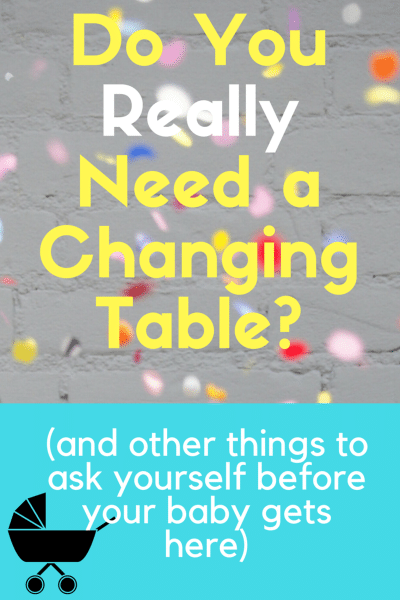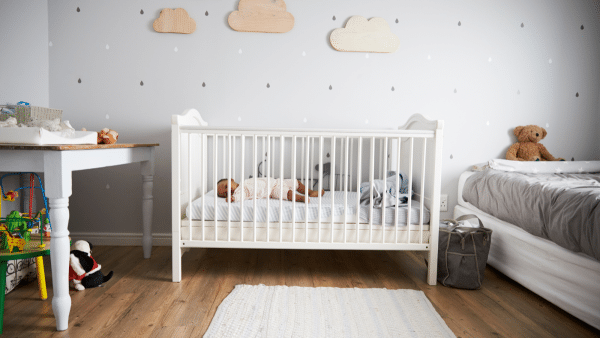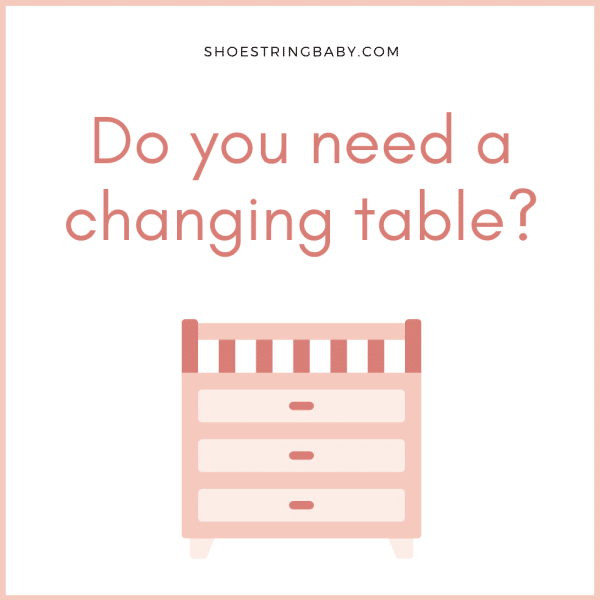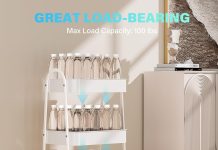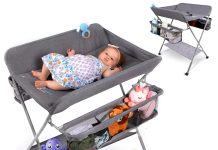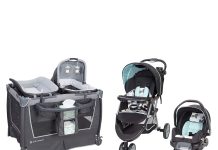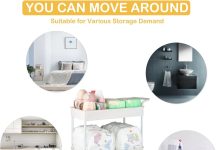If you’re expecting a baby or while raising a child, the question of whether or not you need a changing table may have crossed your mind.
While some parents swear by this piece of furniture and its convenience, others find alternative solutions just as effective. Before deciding, it’s essential to weigh the pros and cons and consider your lifestyle and preferences.
This article’ll explore the practical aspects of owning a changing table, such as storage options, space limitations, and portability, to help you make an informed choice that best fits your family’s needs.
Review contents
Benefits of a Changing Table
Convenience
A changing table can provide a great deal of convenience for new parents. Instead of constantly bending over or kneeling on the floor to change your baby’s diaper, a changing table allows you to stand comfortably at a suitable height. This can be especially beneficial for parents with back or knee problems, as it reduces the strain on your body. Additionally, a changing table typically comes equipped with storage compartments, allowing you to keep all of your diapering essentials in one place, making the process of changing diapers much more efficient.
Organization
One of the significant advantages of a changing table is the organization it offers. With multiple shelves and drawers built into the table, you’ll have ample space to store diapers, wipes, rash creams, and other baby essentials. This keeps your diapering supplies within easy reach and helps declutter your nursery or baby’s room. Having a designated spot for diapering supplies can help you maintain a sense of order and ensure that everything is easily accessible when needed.
Safety
Safety is of utmost importance when it comes to changing diapers. A changing table provides your baby with a safe and secure environment during diaper changes. Most changing tables have safety features such as raised sides or guardrails to prevent your baby from rolling off the table. Knowing that your little one is protected gives you peace of mind and reduces the risk of accidents or injuries during diaper changes.
Comfort
Not only are changing tables convenient and safe, but they also offer comfort for you and your baby. The cushioned changing pad provides a soft and comfortable surface for your baby to lie on, making the diaper-changing experience more pleasant. Additionally, the raised height of the table reduces strain on your back and knees, allowing you to change diapers with ease and comfort. The comfort factor can make diaper changes a more enjoyable experience for both you and your baby.
Factors to Consider
Space Available
Before investing in a changing table, it’s essential to consider the available space in your nursery or baby’s room. Changing tables come in various sizes, so measure the area where you plan to place the table. You’ll want to ensure enough space to walk around the table comfortably and that it won’t overcrowd the room. If you have limited space, consider alternative options, such as a changing pad on a dresser or a portable changing station.
Budget
Another factor to consider is your budget. Changing tables can range in price depending on the brand, features, and materials used. Determining how much you’re willing to spend on a changing table before purchasing is essential. While some changing tables may be more expensive, they often come with additional features and better-quality construction. However, if you’re on a tight budget, more affordable options are available that still provide the necessary functionality.
Alternative Options
While a changing table can be beneficial, it’s not the only option for changing your baby’s diapers. If you’re limited on space or have budget constraints, alternative options exist. Changing pads on dressers offers a space-saving solution, allowing you to utilize an existing piece of furniture.
Changing pads on the floor provides a portable and convenient option, especially for parents who prefer to have their baby at ground level during diaper changes. Portable changing stations are also available, offering a compact, travel-friendly option for on-the-go parents.
Alternatives to a Changing Table
Changing Pad on a Dresser
A changing pad on a dresser is a popular alternative to a traditional changing table. You can create a space-saving and functional diaper-changing area by placing a changing pad on top of a sturdy dresser or a chest of drawers. This option allows you to utilize existing furniture in your baby’s room and eliminates the need for a separate changing table. However, ensuring the dresser is stable and secure is essential, with no risk of tipping over. Additionally, consider adding adhesive safety straps to secure the changing pad to the dresser for added safety.
Changing Pad on the Floor
A changing pad on the floor is an excellent alternative for parents who prefer to have their baby at ground level during diaper changes. This option eliminates the need for furniture and provides a portable and convenient solution. Simply place a changing pad or a waterproof mat on the floor, along with a basket or organizer to hold your diapering essentials. This setup allows you to change your baby’s diaper anywhere in the house without the limitations of a changing table. However, it’s essential to ensure that the floor is clean, comfortable, and free from hazards.
Portable Changing Station
A portable changing station can be a practical option if you’re always on the go or have limited space. These compact and lightweight stations typically include a changing pad, storage pockets, and sometimes even a built-in diaper dispenser. Portable charging stations allow you to have a dedicated diaper changing area wherever you need it – whether in the living room, car, or even when traveling. Look for a portable changing station that is easy to fold and transport yet still offers comfort and functionality for your baby.
Tips for Choosing a Changing Table
Size and Height
When choosing a changing table, it’s essential to consider the size and height of the table. The size should be proportional to the space in your nursery or baby’s room. Measure the area where you plan to place the changing table and ensure that it will fit comfortably without overcrowding the room. Additionally, ensure the table’s height suits you, especially if you have back or knee problems. Opting for an adjustable height table can provide added convenience and comfort.
Storage Options
Look for a changing table that offers ample storage options. Consider how many diapers, wipes, and other essentials you need to store, and choose a table with enough shelves or drawers to accommodate them. Having storage compartments built into the table ensures that everything is within arm’s reach and helps to keep your diapering supplies organized and readily accessible. Some changing tables even have additional features, such as built-in diaper dispensers or hooks for hanging bags or towels.
Sturdiness and Durability
Ensure that the changing table you choose is sturdy and built to last. Check the construction and materials used to ensure the table is stable and supports your baby’s weight. Look for solid wood or metal frames, and avoid tables made from flimsy or cheap materials. It’s also a good idea to read reviews from other parents to determine the table’s durability and how well it holds up over time. Investing in a high-quality changing table will provide a safe and reliable diaper-changing area and save you from having to replace it shortly.
Safety Features
Your baby’s safety is of utmost importance, so choose a changing table with appropriate safety features. Look for tables with raised sides or guardrails to prevent your baby from rolling off the table during diaper changes. It’s also a good idea to check if the table meets the safety standards set by relevant organizations. Additionally, consider adding adhesive safety straps to secure the changing pad to the table for added peace of mind.
Style and Design
While functionality and safety are key factors when choosing a changing table, don’t forget the style and design. The changing table will likely be a focal point in your nursery or baby’s room, so select a style that complements your overall decor. Whether you prefer a modern, traditional, or rustic look, plenty of options are available to suit your taste. You can create a cohesive and aesthetically pleasing space for you and your baby by choosing a changing table that matches your style.
How to Make a Changing Table Functional
Keep Essentials Within Reach
To make your changing table functional, keeping all your diapering essentials within reach is important. Arrange your diapers, wipes, rash cream, and other supplies in an organized manner on the shelves or in the drawers of the changing table. Avoid cluttering the table’s surface, as this can make locating the items you need quickly challenging. Consider using dividers or storage containers to separate different categories of supplies and make them easily accessible.
Use Organizers and Baskets
Utilizing organizers and baskets can help you maximize storage space and tidy your changing table. Choose organizers that fit the size of your shelves or drawers and use them to store smaller items such as pacifiers, nail clippers, or hairbrushes. Baskets are also great for holding bulkier items like blankets or toys. Using these organizational tools lets you keep your changing table neat and well-structured, making it easier to find and grab what you need without any hassle.
Utilize Wall Space
If your changing table has limited storage, consider utilizing the wall space above or alongside the table. Install shelves or wall-mounted storage units to hold additional supplies or decorative items. This creates more storage options and adds visual interest to the room. Use hooks or hanging organizers to keep frequently used items within arm’s reach, such as burp cloths or onesies. By using the vertical space, you can maximize the storage capacity of your changing table area.
Keep it Clean and Sanitary.
Maintaining cleanliness and sanitation is essential when it comes to a changing table. Be sure to wipe down the table’s surface with a baby-safe disinfectant before and after each diaper change to keep it free from germs and bacteria. Use washable or disposable changing pad liners to protect the changing pad from any messes. Regularly wash or replace the changing pad covers and any fabric organizers to ensure a clean and hygienic space for your baby.
What to Look for in a Changing Pad
Waterproof Material
A good changing pad should have a waterproof surface to prevent any liquids or messes from seeping into the pad and causing damage. Look for changing pads made from materials such as vinyl or polyurethane, as they are waterproof and easy to wipe clean. A waterproof changing pad ensures that any accidents or spills during diaper changes can be quickly and easily cleaned up, keeping the pad hygienic and in good condition for future use.
Comfortable Padding
Your baby will spend significant time on the changing pad, so choosing one that is comfortable and supportive is essential. Look for changing pads with ample padding, preferably made from soft and cushioned materials. This will provide a comfortable surface for your baby to lie on during diaper changes, ensuring a pleasant experience. Avoid changing pads that are too thin or rigid, as they may not provide adequate comfort for your baby.
Safety Straps
Safety is a top priority, even when it comes to a changing pad. Look for changing pads with safety straps to secure your baby during diaper changes. These straps typically go around your baby’s waist, keeping them in place and preventing them from rolling or sliding off the pad. Safety straps are essential when using a changing pad on a dresser or any other elevated surface. Ensure the safety straps are securely fastened before changing your baby’s diaper.
Easy to Clean
Changing pads can get messy, so choosing one that is easy to clean is essential. Look for machine-washable pads that can be wiped clean with a damp cloth. They are changing pads with removable, washable covers, which is incredibly convenient, as they can be quickly removed and cleaned whenever necessary.
Avoid changing pads with intricate patterns or textures that may be difficult to clean thoroughly. A changing pad that is easy to clean ensures that you can maintain a hygienic environment for your baby during diaper changes.
When to Skip a Changing Table
Limited Space
You may consider skipping a traditional changing table if you have limited space in your nursery or baby’s room. Instead, opt for alternative options such as a changing pad on a dresser or changing pad on the floor. These options provide a more space-efficient solution, allowing you to utilize the available space effectively without overcrowding.
Low Budget
If you’re on a tight budget, investing in a changing table may not be feasible. Changing tables can range in price, and higher-quality options often come with a higher price tag. Instead, consider alternative options such as a changing pad on a dresser or a portable changing station, which tend to be more budget-friendly while providing a functional diaper-changing area.
Already Have an Alternative
You may not need a changing table if you already have an alternative setup that meets your diaper-changing needs. For example, if you’re using a changing pad on the floor or a changing pad on a dresser that works well for you and your baby, you may not need to invest in a separate changing table. Stick with what works for you and your family.
Preference for Portability
If you’re constantly on the go or prefer a portable diaper-changing option, a changing table may not fit you best. Portable changing stations offer a compact and travel-friendly solution, allowing you to have a dedicated diaper-changing area wherever needed. If portability is your priority, consider opting for a portable changing station instead of a traditional changing table.
Conclusion
While a changing table can provide convenience, organization, safety, and comfort for diaper changes, it is not the only option available. Factors such as available space, budget, and personal preference should be considered when deciding whether to invest in a changing table or explore alternative options.
Whether you choose a changing table, a changing pad on a dresser, or a portable changing station, the key is to create a functional and comfortable diaper-changing area that meets your and your baby’s needs.

